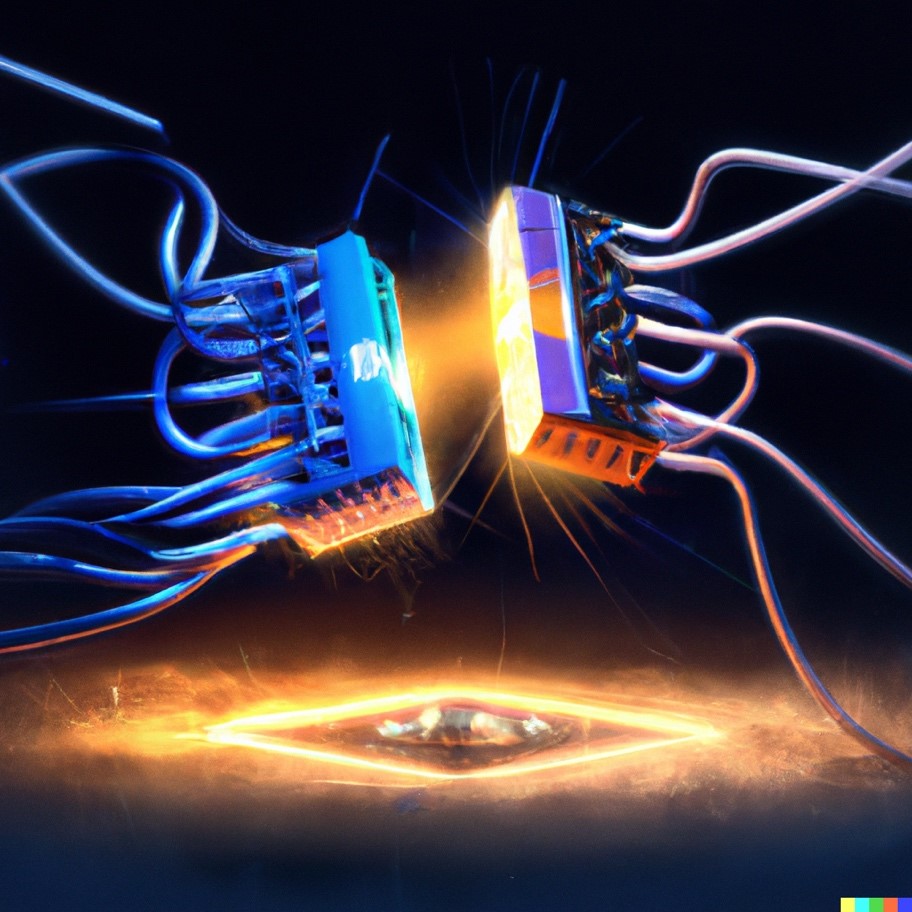Shining new light on photonic quantum computers
What make a quantum computer different from a normal -often called “classical”- computer?
For a user, the most relevant answer to this question is undoubtably that a quantum computer should be able to solve some very specific problems much faster than a normal computer ever could. This is not because we are bad at building or programming computers, but because there are fundamental different in the physical properties upon which classical and quantum computers are based.
In the past two decades, a growing research effort has been dedicated to understanding these fundamental differences. Computer scientists and physicists look for specific problems where it can be rigorously proven that quantum computers can efficiently solve them while classical computers cannot. This concept is known as a quantum computation advantage.
From a physicist’s point of view, any quantum algorithm boils down to preparing and measuring a quantum state. It is then an intriguing question which physical properties are required to make the measurement of a quantum state hard to replicate on a classical computer. This question is generally very hard to answer, because we must consider both the properties of the quantum state we prepare and of the measurement we perform. This becomes particularly clear when we consider problems like Gaussian boson sampling, where neither the state nor the measurement is complicated in its own right but the combination of both makes it possible to demonstrate a quantum computational advantage as was done by USTC and Xanadu.
Boson sampling is a quantum version of a Galton board where many photons are simultaneously sent through a labyrinth of optical elements such as beam splitters and phase shifters. Contrary to the Galton board where the output configuration can be easily approximated, photons wandering through a maze a notoriously difficult to follow. The many crossings of their different possible pathways lead to complicated interference patterns that get astronomically difficult to calculate as the number of photons in the maze grows. Approximating the output configurations of a boson sampler has become paradigmatic problem which is easy for a quantum computer but completely impossible for a classical one. While the specific problem has no practical use that we know of, the study of boson sampling is of fundamental importance for theoretical computer science.
The stellar rank is a mathematical tool used to classify quantum states of bosonic systems such as light. A pure quantum state, i.e., a state without any noise, can be represented by a holomorphic function on phase space. Such functions always take the form of a polynomial multiplied with a Gaussian envelope. The stellar rank is defined as the degree of this polynomial. For more realistic quantum states with noise, we must consider a convex combination of holomorphic functions and we define the stellar rank as the highest possible degree polynomial in the holomorphic functions in the convex combination. From a mathematical point of view, this formalism in interesting because holomorphic functions have nice properties. The recent results of the LKB and the Inria give a much more practical meaning to the stellar rank as the number of photons that can contribute to a quantum computation.
In a recent work, researcher from LKB and Inria found a new way to deal with this question. They combine techniques from quantum optics and theoretical computer science to show that for any combination of quantum state and measurement one can find an equivalent setup in which the measurements are entirely classical. As a consequence, this equivalent setup as all the required properties for a quantum computational advantage in the quantum state.
This new framework made it possible to make a connection to the stellar rank, a quantity introduced in previous work. While initially this stellar rank served primarily as a useful mathematical tool to characterize quantum states, these new results show that it is directly related to computational power. More specifically, the team found that systems with a low stellar rank are always easy to simulate. In this sense, we reach the natural interpretation that the stellar rank corresponds to the highest number of photons that contributes to the computation.
Furthermore, the new formalism also identifies a new type of entanglement as a required property such that the measurement results cannot be efficiently replicated on a classical computer. For optical systems, we identify this entanglement as the entanglement that requires nonlinear optics to be generated.
These results have several useful applications. First of all, they make it possible to compare the computational power of very different photonic devices. Furthermore, they can help come up with new experimental implementations for quantum protocols such as boson sampling. Finally, knowing which physical properties are essential to identify the computational power of a quantum device provides a pathway to benchmark devices of increasing complexity.
Pour aller plus loin…
Article: U. Chabaud and M. Walschaers, Resources for Bosonic Quantum Computational Advantage Phys. Rev. Lett. 130, 090602 (2023)
Other resources:
- “Is my quantum computer better than yours?» (article Inria, 6 mars 2023 – CNRS, 3 mars 2023)
- “Internet quantique : c’est pas tout net” (La Science CQFD, podcast Radio France, 4 mai 2023)
Further reading:
- U. Chabaud, D. Markham, F. Grosshans, “Stellar Representation of Non-Gaussian Quantum States”, Phys. Rev. Lett. 124, 063605 (2020).
- M. Walschaers, “Non-Gaussian Quantum States and Where to Find Them”, PRX Quantum 2, 030204 (2021).
- U. Chabaud, G. Roeland, M. Walschaers, F. Grosshans, V. Parigi, D. Markham, N. Treps, “Certification of non-Gaussian states with operational measurements”, PRX Quantum 2, 020333 (2021).

